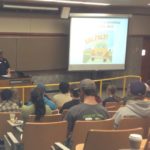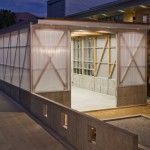It’s that time of year again: newly graduated college students are entering the workforce. For the student, it’s an anxious time. They are often wondering how and if four plus years of college has effectively prepared them for the real working world. For the potential employer, it can be a gamble. They have decided to take a chance on someone who likely does not have any professional work experience, but expect production from day one. On a recent visit to Cal Poly San Luis Obispo, my colleague Scott Fischer got a firsthand view of what students are doing to prepare for a career.

When Scott attended Cal Poly 18 years ago, he was often told to come away with an “academic tool box.” These days, students are coming away with the whole hardware store. Learning to design in all building materials, understanding that ‘statics is our friend’, knowing the basics of the building code, understanding how a building is put together and the necessity of a sensible load path are not only basics at Cal Poly, but serve as a jumping off point for these future employees. Not only are these students taking nine hour a week lab design courses for each structural material discipline (which, by many accounts, are graduate-level type courses) and running relevant load tests on any given structural material on a given day, they are also involved in multiple other educational activities during their free time.

The student chapter of the Structural Engineers Association of California (SEAOC) follows the university’s “Learn by Doing” motto by visiting structural engineering offices and touring current construction projects. Recent visits to several high-profile structural firms and jobsites in Southern California and New York City provided students with a real world glimpse of what to expect when that first professional workday comes. These outings provide initial contacts that students may be able to use to get a foot in the door.
Many of these companies send representatives to Cal Poly’s Architectural Engineering (ARCE) Department’s annual Structural Forum. This past year’s event was the 22nd annual get together, where 29 firms and 140 students gathered for dining and discussion on current and relevant structural topics, as well as individual discussions on employment opportunities. The “Rebuild and Reuse” theme was of great interest to many students who have a growing passion in retrofit work and the challenges of incorporating the old with the new.
These extracurricular activities, along with Senior Projects, including studying the behavior of large wood frame diaphragms, analyzing ultra low-force vibration testing on full scale building models and researching interlocking compressed earth blocks, give me an idea of the sort of employee I might get from a recent grad. If a student can successfully combine all of the coursework, the ‘academic tool box’ (or hardware store), their professional contacts and a real world perspective with a high quality Senior Project, they have all the earmarks of someone I want working right next to me.
– Paul
What are your thoughts? Visit the blog and leave a comment!




